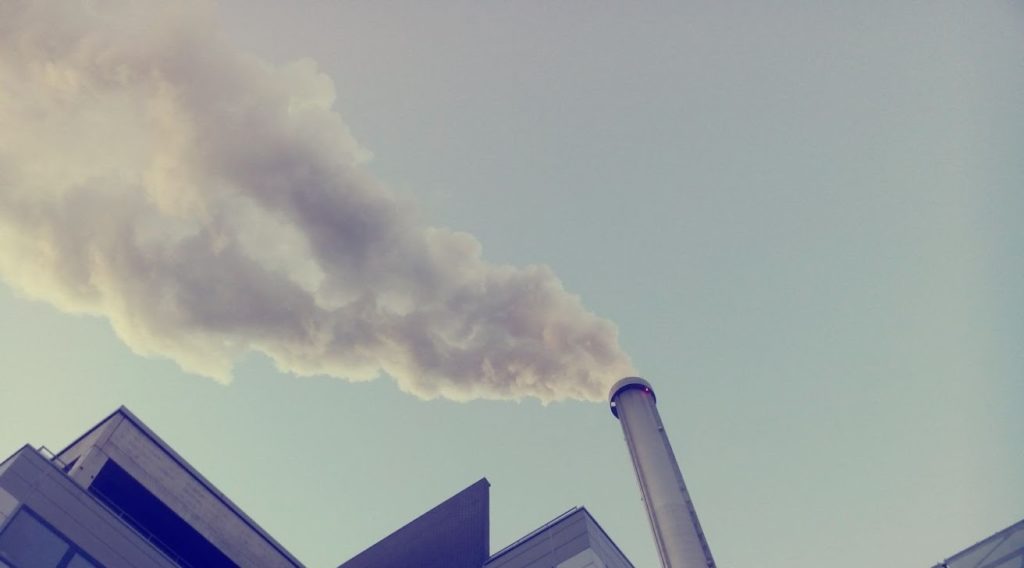Incineration is the most expensive and polluting way to manage waste or to generate energy.[1] There is no need to burn any sort of waste, as safer non-burn alternatives exist for all materials, including recyclable and compostable discards like paper, plastics, glass, metals, food scraps and yard waste.
“Waste-to-Energy” is a public relations term used to promote incineration,[2] but waste is not magically transformed into energy. For every 100 tons of trash burned, about 70 tons become air pollution.[3] The other 30 tons become toxic ash that is typically dumped in landfills, making them more harmful than if all of the waste went there unburned. Even worse, some is used in dangerous ash reuse schemes.

Incinerators are a massive “waste-of-energy,” since recycling and composting the materials being burned would save 3-5 times more energy by not having to recreate products from extracting raw materials.[4] Zero waste strategies such as recycling and composting create 5-10 times as many jobs per ton of waste than incinerators or landfills. By diverting discarded materials (and investment) away from recycling, incinerators burn much needed jobs.[5]
As filthy as coal burning is, trash incineration is even worse, despite the average incinerator being much newer and having additional pollution controls. To make the same amount of energy as coal, trash incinerators release 2.5 times as much carbon dioxide and much higher levels of dioxins, mercury, lead, cadmium, carbon monoxide, nitrogen oxides and hydrochloric acid.[6]
Incinerators are also far worse than directly landfilling the same materials, in terms of greenhouse gas emissions and emissions of toxic chemicals, nitrogen oxides, particulate matter, acid gases and chemicals that create smog – even when hauling the waste long distances to reach landfills.[7]
Public health studies have shown that living near incinerators increases birth defects, pre-term births, reproductive disorders, respiratory diseases and deaths in general, especially from various cancers.[8] Toxic incinerator pollution also contaminates the food chain. Dioxins, the most toxic chemicals known to science, are mainly released from burning, and can travel thousands of miles. They are long-lived and fat-soluble, causing them to bioaccumulate in the food chain, and can cause cancer, birth defects, failed pregnancies, endometriosis, diabetes, learning disabilities, immune system suppression, lung problems, skin disorders, lowered testosterone levels and much more.[9] Over 90% of human exposure to dioxins is through eating meat and dairy products where dioxins concentrate.[10]
In the U.S., incinerators disproportionately impact people of color, especially Black residents. Analysis by Energy Justice Network finds that 78% of U.S. trash incinerators are in communities where the population of people of color is above the national average, and that 35% are in communities where people of color are the majority.[11]
Incinerators are more expensive to build and operate than landfills or any other form of power generation (see Landfill Gas to Energy).[12], [13] Factoring in bond debt to finance them, a large-scale new waste incinerator can cost around US$1 billion. These costs are always paid by the public purse, and some cities and towns have faced bankruptcy due to the costs of incinerators.[14], [15] Unlike landfills, incinerators must be continually fed a certain amount of waste to operate, and “put or pay” clauses in incinerator contracts are common – where the communities have to provide a certain amount of waste, or pay regardless. This penalizes local governments that succeed in waste reduction efforts while allowing incinerators to take waste from elsewhere and be paid twice for the same capacity.
Incineration is a dying industry, primarily present in Japan, South Korea, Europe, Canada and the U.S. Hundreds of aging incinerators around the world have closed and the industry is only able to build new ones in nations that can afford to subsidize them. The one nation experiencing a proposed proliferation of waste burning facilities is China, where hundreds of new waste and biomass incinerators have been proposed in recent years. Community opposition is so strong in the U.S. that no trash incinerators have been built at a new site since 1995, despite hundreds of attempts. Aside from some rare expansions at existing sites, the industry sees their future mainly in Asia, Australia and parts of Europe.
Unable to compete economically with landfills or with other forms of energy, the incinerator industry is propped up by a variety of subsidies, including monopoly waste contracts, air pollution exemptions, bogus designations as recycling operations, and climate policies based on a false accounting of climate impacts. Renewable energy mandates also grant money from electric bills to incinerators where states have blessed the industry with a “renewable energy” label, cutting into the share that ought to go to real renewables like wind and solar. The industry has also adopted survival strategies such as burning more dangerous types of waste that fetch higher disposal fees.

Incineration’s New Directions
Refuse-derived fuel (RDF) is an old technology that has re-emerged. It involves pulling out the glass and metals that do not burn and turning the combustible materials (mostly paper and plastics) into fuel pellets. These trash pellets are either burned in a normal incinerator (where the pollution is comparable to normal trash burning), or are marketed as fuel to cement kilns or power plants looking to replace coal. Energy intensive paper mills and cement and aggregate kilns have long burned tire-derived fuel (TDF), and the kilns have also been a cheap dumping ground for hazardous waste in recent decades. Now, hard-to-recycle plastics are being marketed to cement kilns and steel mills as “plastic-derived fuel” (PDF). An Obama-era Environmental Protection Agency regulatory loophole (the “non-hazardous secondary materials” rule) has encouraged a wide range of waste streams to be burned as “fuels” in industrial furnaces without being regulated as waste incinerators.
Experimental incinerator technologies – namely pyrolysis, gasification, and plasma arc – have been proposed for many years by new companies claiming that these technologies are not incineration. Sometimes, they even claim to have no smokestack or to have “near zero emissions.” However, these technologies are defined and regulated as incinerators in both the U.S. and Europe. They essentially break the combustion process into two steps. First, they use temperature and pressure to turn the waste into a “syngas,” then they typically burn that gas in a second stage. These technologies have proved to be failures, both technically and economically.[16] They are more expensive than normal incinerators and have not been successfully developed at commercial scale. Small pilot-scale plants have been built, but break down a lot, and cannot operate continuously with any material that is not very homogeneous. Numerous attempts to process plastics or tires have failed, even though these are much more consistent than trying to process trash. Despite overwhelming failures and air pollution problems inherent to incinerators, many companies continue to court local officials desperate for economic development or “green” waste management solutions, and end up wasting time and public money pursuing these unproven, experimental “incinerators in disguise.”
Waste-to-fuels (WTF?) schemes are also starting to emerge after a couple decades of trial and errors. Now called “waste conversion technologies” (to avoid their acronym problem), WTF technologies often start with pyrolysis or gasification. Instead of burning the “syngas” in a second stage, they use any of several methods to convert it to liquid fuels such as jet fuel, naphtha, and diesel, hydrogen and/or other chemicals. Solid residuals are often marketed as if they are desired as building materials or are burned on-site. Some WTF processes use acid hydrolysis, cellulosic ethanol or other fermentation processes aiming to make biofuels. With a growing public awareness of plastics pollution, including the proliferation of single-use plastics and the massive plastic gyres in all the world’s oceans, we are witnessing a growing field of “chemical recycling” proposals, using these WTF processes. These technologies are still experimental and ultimately involve burning (and air pollution), destroying recyclable and compostable materials, increasing toxicity and producing solid wastes.[17]
Break Free From Plastics: breakfreefromplastic.org
Energy Justice Network: energyjustice.net/incineration
Global Alliantce for Incinerator Alternatives: no-burn.org
Zero Waste Europe: zerowasteeurope.eu
[1] Energy Justice Network. (2021, March 20). Incineration and incinerators-in-disguise. http://energyjustice.net/incineration/
[2] Energy Justice Network. (2021, February 17). Incinerators are NOT “waste-to-energy” facilities. http://energyjustice.net/incineration/waste-to-energy
[3] Energy Justice Network. (2021, March 20). Trash incinerator ash – Nearly 30 tons for every 100 tons burned. http://energyjustice.net/incineration/ash
[4] Morris, J. (1996). Recycling versus incineration: An energy conservation analysis. Journal of Hazardous Materials, 47(1-3), 277-293. http://doi.org/10.1016/0304-3894(95)00116-6; Full copy available at https://web.archive.org/web/20170329083709if_/http://ewp.rpi.edu:80/hartford/~ernesto/S2014/SHWPCE/Papers/SW-Preprocessing-Separation-Recycling/Morris1996-Recycling-vs-Incineration-Energy.pdf
[5] Energy Justice Network. (2021, March 20). Clean energy and zero waste produce the most jobs. http://energyjustice.net/jobs
[6] Energy Justice Network. (2020, December 24). Trash incineration more polluting than coal. http://energyjustice.net/incineration/worsethancoal
[7] Zero Waste Montgomery County. (2021, March). Beyond incineration: Best waste management strategies for Montgomery County, Maryland. http://energyjustice.net/md/beyond.pdf
[8] Ewall, M. (2020, February). Trash incineration FACT CHECK: Covanta’s “energy-from-waste & health risk” flyer. http://energyjustice.net/incineration/healthstudies.pdf
[9] Ewall, M. (2012). Dioxins and furans: The most toxic chemicals known to science. http://ejnet.org/dioxin
[10] National Academy of Sciences. (2003). Exposure and human health reassessment of 2,3,7,8-Tetrachlorodibenzo-p-Dioxin (TCDD) and related compounds. cfpub.epa.gov/ncea/iris_drafts/dioxin/nas-review/; See Pt 1, Vol 2, Chap 4, Table 4-30 on p. 4-110
[11] Energy Justice Network. (2019). Operating trash incinerators. SpatialJusticeTest.org. http://spatialjusticetest.org/test/1127.html; Note that a race ratio greater than one means that a demographic group is more impacted than others at the distance indicated. If all incinerators were distributed fairly by race, all lines would follow a ratio of one. Data on each facility available via http://energyjustice.net/map/jtiny=4758
[12] Energy Justice Network. (2019). Trash incineration is the most expensive way to manage waste. http://energyjustice.net/incineration/expensive-waste
[13] Energy Justice Network. (2014). Trash incineration is the most expensive way to make energy. http://energyjustice.net/incineration/expensive-energy
[14] Energy Justice Network. (2011). We predicted the nation’s largest city bankruptcy — 8 years ago. http://energyjustice.net/harrisburg-bankruptcy-predicted
[15] Rutland Daily Herald. (1993, September 17). 200 tpd mass-burn incinerator, owned and operated by Wheelabrator. Incinerator contract forces 29 towns to file for Chapter 9 bankruptcy. http://americanhealthstudies.org/wastenot/wn244.htm
[16] Ciplet, D. (2009, November). An industry blowing smoke: 10 reasons why gasification, pyrolysis and plasma arc are not green solutions. Global Alliance for Incinerator Alternatives. http://no-burn.org/wp-content/uploads/BlowingSmokeReport-1.pdf
[17] Global Alliance for Incinerator Alternatives. (2020). Chemical recycling. http://no-burn.org/chemical-recycling-resources/
